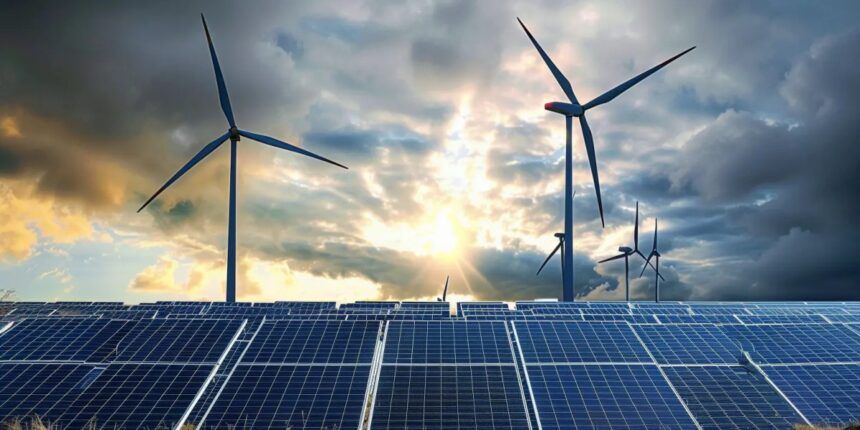By Vijay Jayaraj
Although touted as the next generation of energy sources, solar and wind technologies have been placed on the power grid only through fiat and government subsidies. Failure to be freely adopted by investors and consumers lies in the energy density of solar panels and wind turbines.
Energy density is defined as the amount of energy stored in a given unit of mass or volume – an important metric for determining the viability of an energy source. It is usually measured in joules per kilogram (J/kg) for mass, or joules per cubic meter (J/m³) for volume. Often, the expression is in millions of joules, or megajoules (MJ).
Wood, which was widely used before the introduction of coal, has an energy density of only 16 MJ/kg. Community-ready adoption of fossil fuels starts with higher energy concentrations: Coal is about 24 MJ/kg; oil, 45 MJ/kg; and natural gas, 55 MJ/kg. In a completely different league, nuclear fuel, depending on its type, has an energy density of about 4 million MJ/kg and will undoubtedly be used extensively as society progresses throughout the 21St century and into the next.
Lithium-ion batteries are considered essential to offset the terrible reliability of wind and solar. However, most commercial-scale batteries have an energy density of less than 1 MJ/kg, which is less than wood.
Hydrogen, a fuel considered futuristic, has only one-third the energy density of wood.
As expected, solar and wind are low compared to power density, which is a measure of the energy produced. In terms of land use, solar and wind emit 5-20 and 2-3 watts respectively per square meter of land area where a natural gas power plant produces 1,000 watts.
The superior potential of fossil fuels enables quantum leaps in human productivity, fundamentally altering the trajectory of civilization. These characteristics allow for the creation of compact, portable, and highly efficient energy systems that can power everything from small machines to large manufacturing complexes. Industrial processes that require intense heat or large amounts of power in a short period of time can be accommodated.
Transportation, manufacturing, agriculture – almost every aspect of modern life – was transformed. Cities are getting bigger and more complex, global trade is expanding, and technological innovation is accelerating at a rapid pace. Ultimately, the ability to generate electricity on demand, coupled with the development of extensive distribution networks, brought power to billions of people, dramatically improving living standards around the globe.
Fossil fuels are particularly important for energy-intensive industries such as steel and cement production. These sectors not only require a lot of heat, but also the specific chemical properties provided by fossil fuels.
Energy and power density do not tell the whole story. Relative abundance and ease of extraction and processing are important factors that make fossil fuels preferable to other sources.
Another is the capacity factor of the power plant, or the ratio of actual output to potential output if they were to operate continuously at full nameplate capacity. Coal plants approach 50% capacity factor, and natural gas combined cycle plants exceed 55%. Nuclear plants achieve an impressive average capacity factor of 93%.
However, the wind and solar capacity factors are less than 35% and 25%, respectively, because they depend on weather conditions and the amount of sunlight. This means that wind and solar cannot be turned on whenever the energy is needed. They also cannot adjust their output quickly to the changes they want. In other words, they produce energy when resources are available rather than when they are needed.
Fossil fuels are important, not only for enabling rapidly developing countries, but also for rich countries that need to support economic growth and continue to provide energy at affordable prices for industry and homes. Even Tesla’s Elon Musk uses oil-derived fuel – rocket-grade kerosene – for his SpaceX Falcon rocket.
The call to abandon coal, oil and natural gas will set society back hundreds of years when human nature should be moving forward – even up to the rest of the world. It’s just not in our DNA to reproduce that nonsense.
This comment was first published on BizPac Review on July 16, 2024.
Vijay Jayaraj is a Research Associate at CO2 coalition, Arlington, Virginia. He holds a master’s degree in environmental science from the University of East Anglia, England, and a postgraduate degree in energy management from Robert Gordon University, England.
related
Find out more from Watts Up With That?
Subscribe to get the latest posts delivered to your email.




